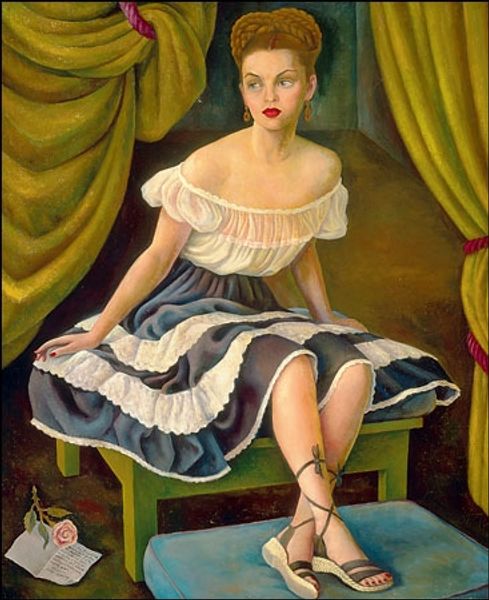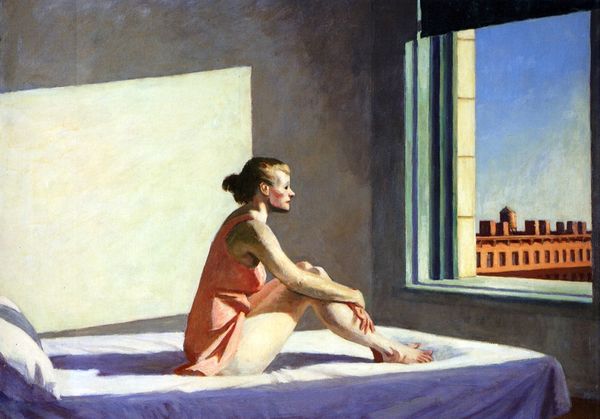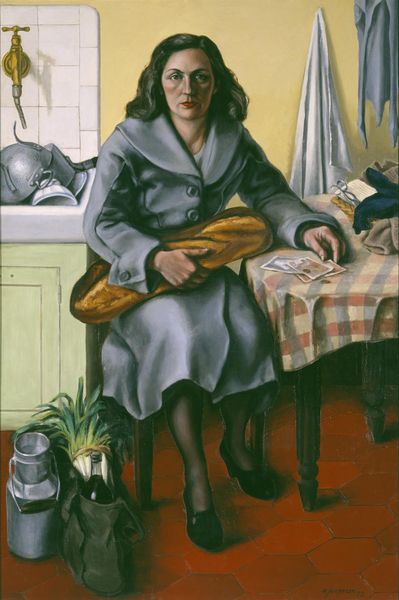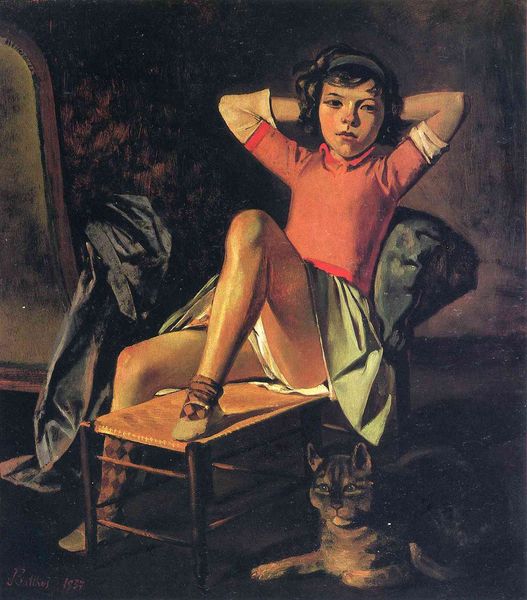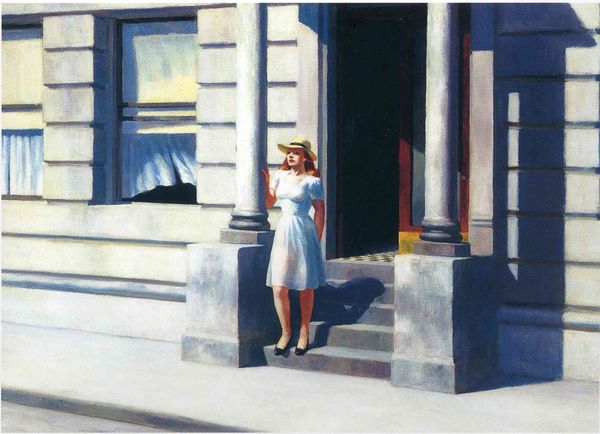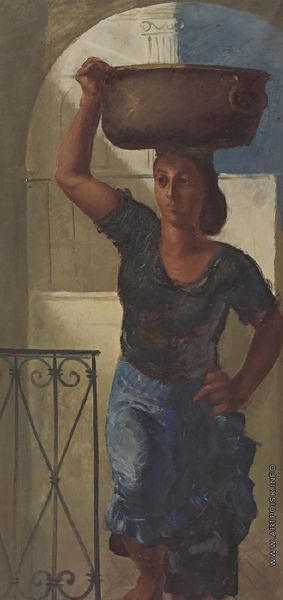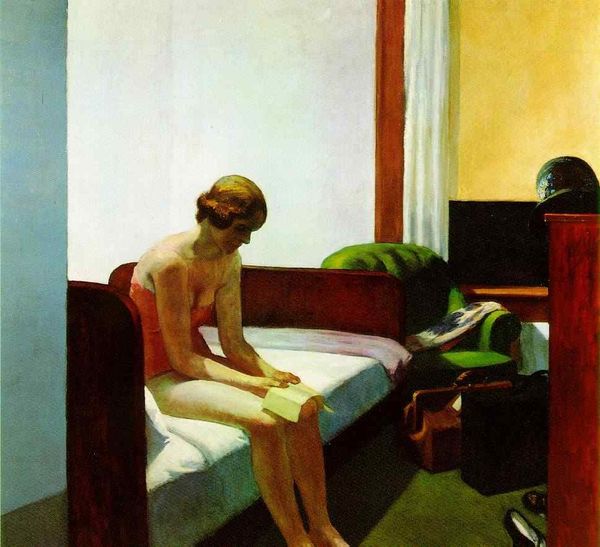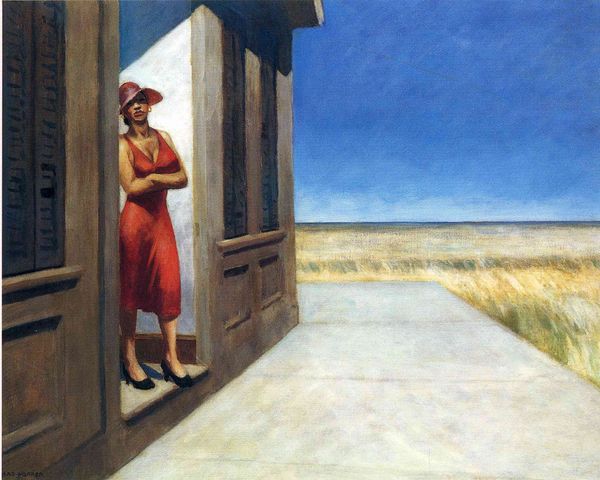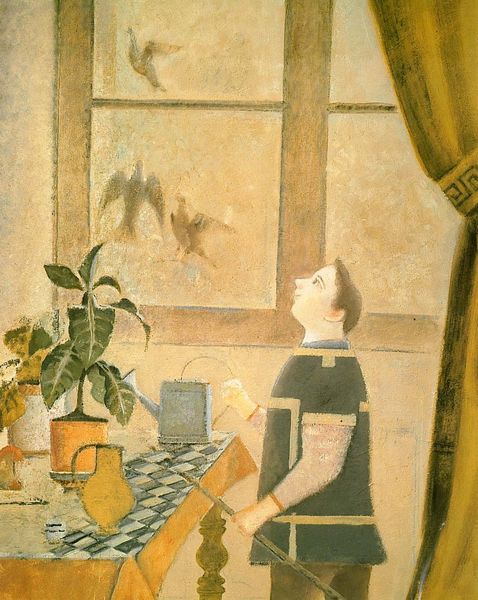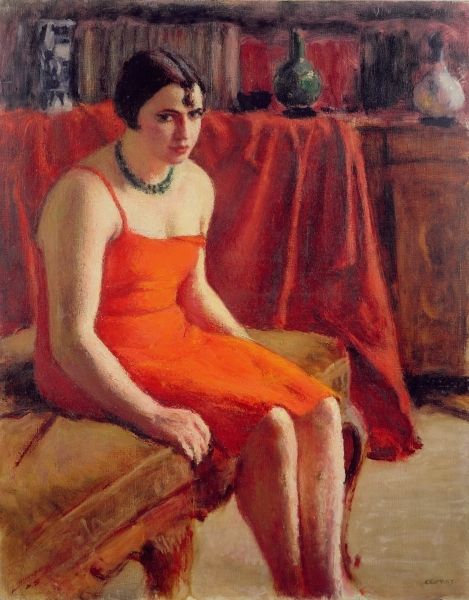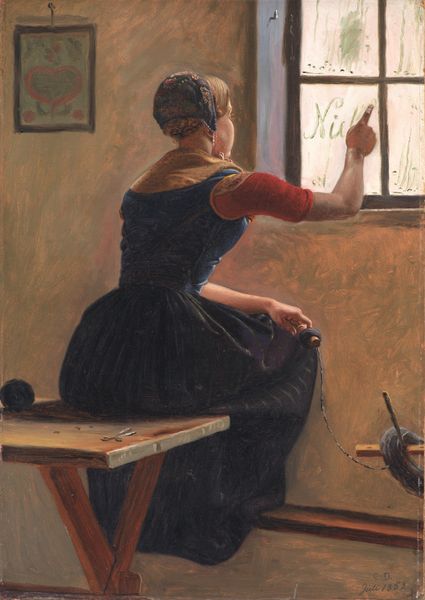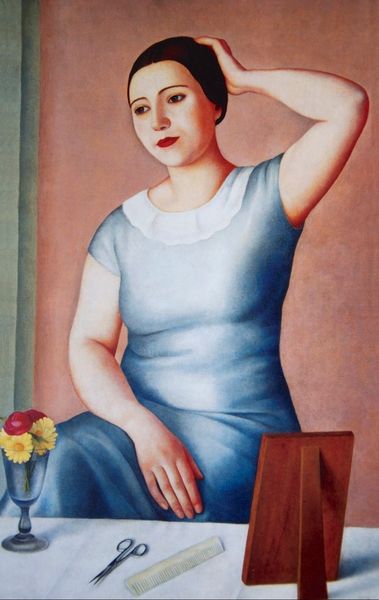
painting, oil-paint
#
portrait
#
painting
#
oil-paint
#
figuration
#
oil painting
#
cityscape
#
genre-painting
#
surrealism
#
portrait art
Dimensions: 162.2 x 114.3 cm
Copyright: Balthus,Fair Use
Editor: Here we have Balthus' "The Fear of Ghosts" from 1933, done in oil paint. It has this really strange, unsettling feeling to it... the woman seems caught between inside and outside. What's your take on it? Curator: For me, it is important to examine how the work comes into being. Oil paint itself is crucial. What grade was used? How was it applied? Look at the visible brushstrokes, almost frantic. They reveal the labor and the tension between representation and the physicality of the medium itself. This is not some ethereal vision; this is worked. Editor: That's an interesting way to put it. So, you're saying the visible brushstrokes are about the… effort and labor? Curator: Precisely. Consider the title: "The Fear of Ghosts". We aren't dealing with actual apparitions but a subjective feeling made real through very tangible means: the layering of pigment, the visible working and reworking of the surface, the sheer quantity of oil that allows him to create this texture. How does this material tension translate to the content of the work? Editor: I guess I was too caught up in trying to understand the woman's expression. Now, I am also asking if he used expensive paints, if they were locally sourced. Curator: And what of the materials implied but not seen? Canvas, brushes, solvents... even the studio space and the social dynamics that allowed Balthus to create this. This woman could have just walked in there with a vision or Balthus could have employed and directed her as a form of control. Those too, become crucial materials in our understanding. Editor: I never thought of it that way! So, the means of production, the materiality of the work itself, can give insight to social circumstances that informed its creation. I’m also considering what wasn’t used, a choice too. Curator: Absolutely! Examining what is left out in a work informs equally about the material construction as what is present. What we consume is carefully constructed.
Comments
No comments
Be the first to comment and join the conversation on the ultimate creative platform.
